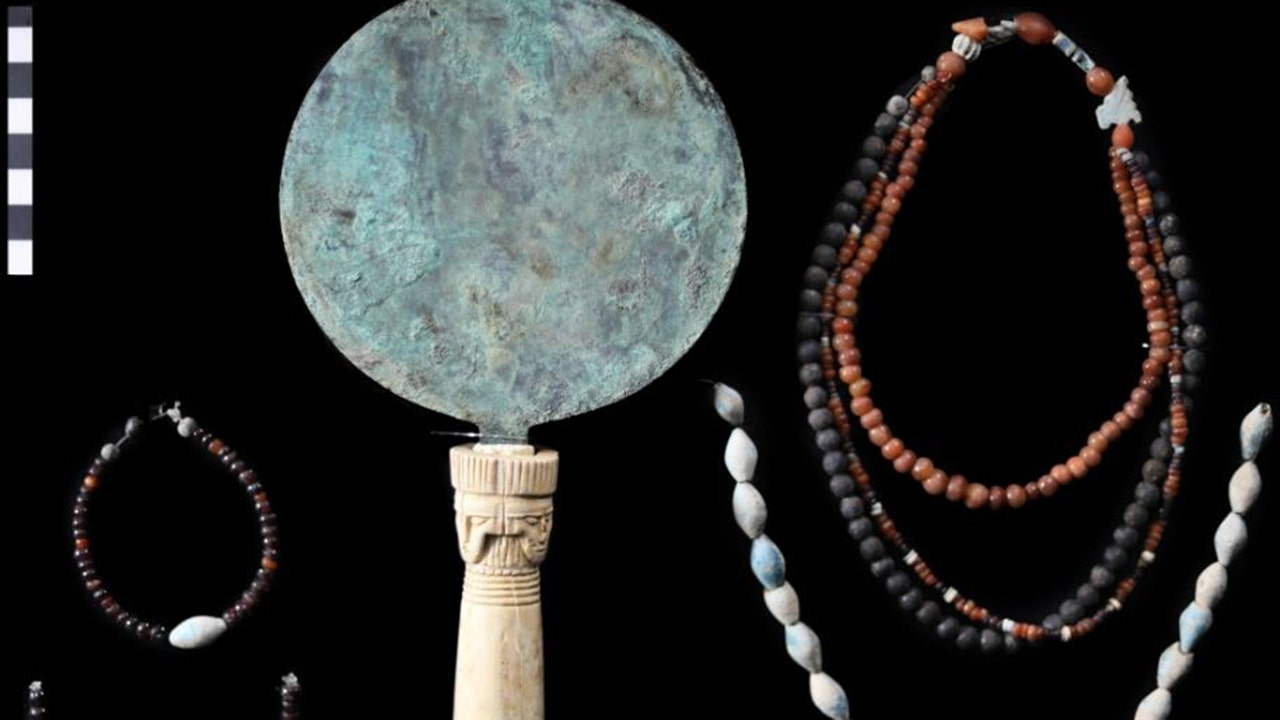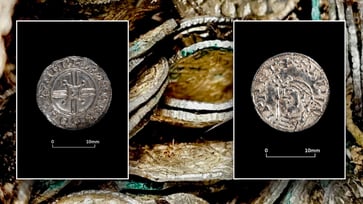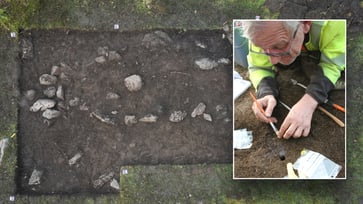An archaeological team from the United States and Egypt unearthed a 4,000-year-old tomb near Luxor, containing jewelry and other artifacts.
The South Asasif Conservation Project has discovered the first crypt from the Middle Kingdom in the region.

Egyptian and American archaeologists discovered a 4,000-year-old tomb near Luxor with multiple intact burials, Egyptian authorities announced on Friday.
In addition to the 11 sealed burials, the archaeologists discovered various pieces of jewelry, including necklaces, bracelets, armlets, two copper mirrors with ivory handles, and scarab rings and girdles made of carnelian, garnet, faience, and feldspar.
Dr. Elena Pischikova, director of the South Asasif Conservation Project, stated in a release that one of the mirrors was discovered with a lotiform handle, while the second exhibited a rare design of a four-faced Hathor presenting herself as a woman with austere features.
An amethyst and agate beaded necklace with a hippo head amulet was discovered in a man's tomb.

The figurine was considered a significant discovery by the group.
"Pischikova stated that the figurine is well-modeled and adorned with various jewelry and lozenge markings on its legs and torso. Its cropped hair is painted black, and the head is pierced with three sections of holes meant for attaching "hair." Next to the figurine, almost 4,000 mud beads were found, which originally served as its hair."
The wooden coffins and fine linens in the tomb were mostly destroyed by what researchers believe were ancient floods.
The remains of five females, two males, and three offspring were found within the caskets.
In the South Asasif necropolis, near the Temple of Hatshepsut on the Nile's West Bank in Luxor, it is believed that the tomb discovered belonged to a family, according to researchers.

The South Asasif Conservation Project reports that the tomb discovered in the area is the first from the Middle Kingdom.
The discovery of the first Middle Kingdom tomb in the South Asasif necropolis changes its history, making it part of the vast Theban Middle Kingdom necropolis, according to Pischikova.
The discovery of this significant artifact contributes to our understanding of the burial practices and rituals of the Theban necropolis in the Middle Kingdom, as well as showcasing a stunning collection of beautifully crafted and well-preserved jewelry.

In southern Egypt, thousands of tombs have been unearthed, including the renowned occupant, Tutankhamen, the Egyptian pharaoh who reigned from approximately 1332-1323 B.C.
His tomb was discovered in 1922.
The Associated Press contributed to this report.
lifestyle
You might also like
- Post-inauguration, the surprising truths about DC travel costs.
- Melania and Donald Trump celebrate their 20th wedding anniversary: View the images.
- John Schneider, known for his role in 'Dukes of Hazzard,' remains steadfast in his belief: "God has a plan."
- Notre Dame football coach and Catholic convert is 'not shy about' the importance of faith.
- Trump confidant and unofficial spiritual advisor: "God is granting America another opportunity"



















